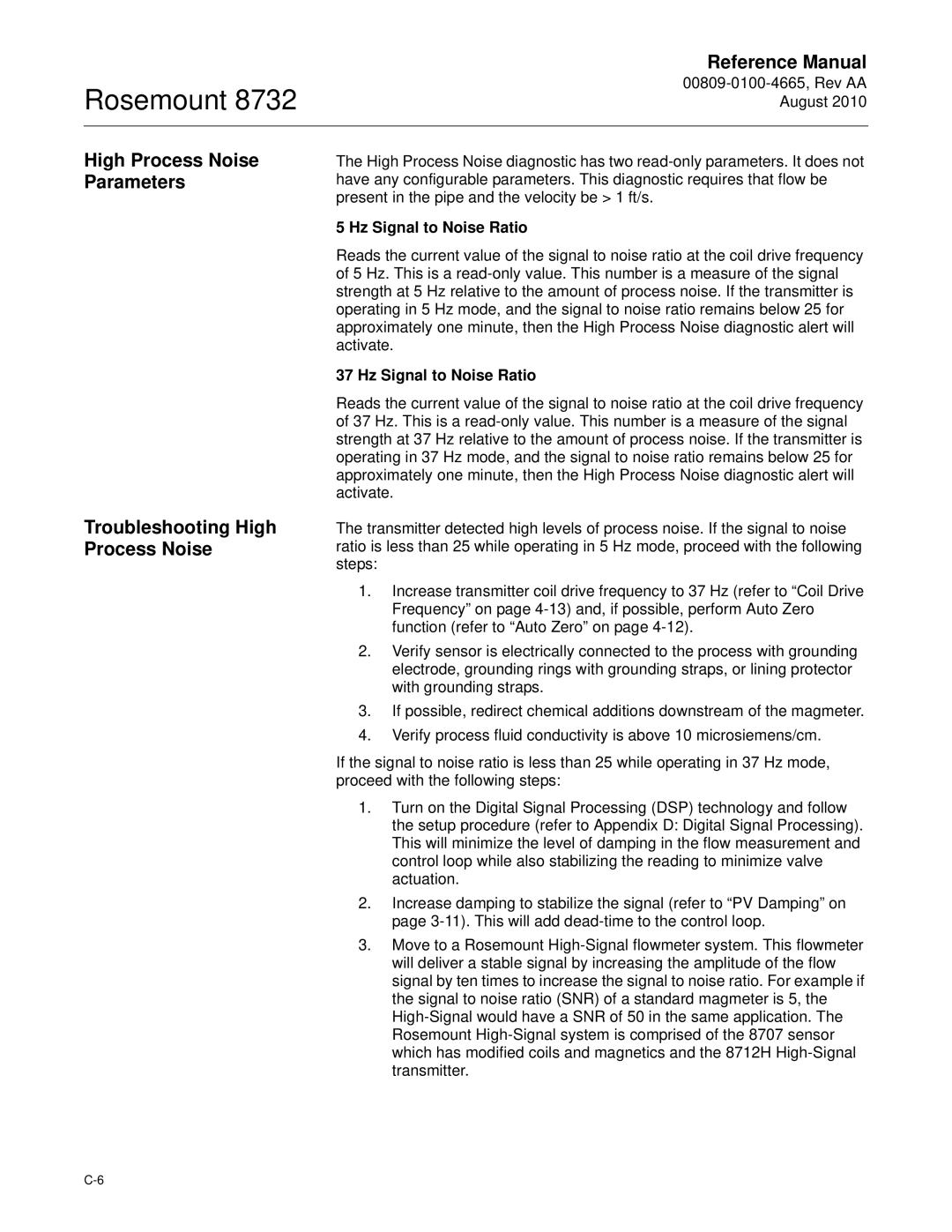Rosemount 8732
Reference Manual
High Process Noise Parameters
Troubleshooting High Process Noise
The High Process Noise diagnostic has two
5 Hz Signal to Noise Ratio
Reads the current value of the signal to noise ratio at the coil drive frequency of 5 Hz. This is a
37 Hz Signal to Noise Ratio
Reads the current value of the signal to noise ratio at the coil drive frequency of 37 Hz. This is a
The transmitter detected high levels of process noise. If the signal to noise ratio is less than 25 while operating in 5 Hz mode, proceed with the following steps:
1.Increase transmitter coil drive frequency to 37 Hz (refer to “Coil Drive Frequency” on page
2.Verify sensor is electrically connected to the process with grounding electrode, grounding rings with grounding straps, or lining protector with grounding straps.
3.If possible, redirect chemical additions downstream of the magmeter.
4.Verify process fluid conductivity is above 10 microsiemens/cm.
If the signal to noise ratio is less than 25 while operating in 37 Hz mode, proceed with the following steps:
1.Turn on the Digital Signal Processing (DSP) technology and follow the setup procedure (refer to Appendix D: Digital Signal Processing). This will minimize the level of damping in the flow measurement and control loop while also stabilizing the reading to minimize valve actuation.
2.Increase damping to stabilize the signal (refer to “PV Damping” on page
3.Move to a Rosemount
